Related Research Articles
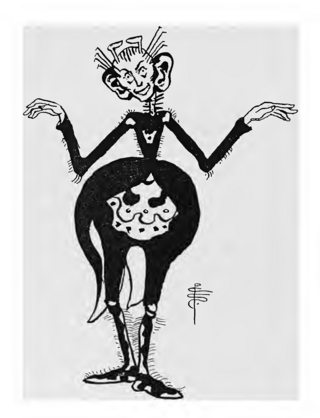
Anansi or Ananse is an Akan folktale character associated with stories, wisdom, knowledge, and trickery, most commonly depicted as a spider, in Akan folklore. Taking the role of a trickster, he is also one of the most important characters of West African, African American and West Indian folklore. Originating in Ghana, these spider tales were transmitted to the Caribbean by way of the transatlantic slave trade.

In mythology, folklore and speculative fiction, shapeshifting is the ability to physically transform oneself through unnatural means. The idea of shapeshifting is found in the oldest forms of totemism and shamanism, as well as the oldest existent literature and epic poems such as the Epic of Gilgamesh and the Iliad. The concept remains a common literary device in modern fantasy, children's literature and popular culture. Examples of shapeshifters are vampires and werewolves.

La Llorona is a vengeful ghost in Mexican folklore who is said to roam near bodies of water mourning her children whom she drowned in a jealous rage after discovering her husband was unfaithful to her. Whoever hears her crying either suffers misfortune or death and their life becomes unsuccessful in every field.
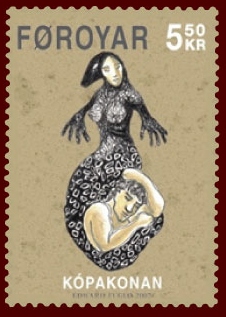
Selkies are mythological creatures that can shapeshift between seal and human forms by removing or putting on their seal skin. They feature prominently in the oral traditions and mythology of various cultures, especially those of Celtic and Norse origin. The term “selkie” derives from the Scots word for “seal”, and is also spelled as silkies, sylkies, or selchies. Selkies are sometimes referred to as selkie folk, meaning 'seal folk'. Selkies are mainly associated with the Northern Isles of Scotland, where they are said to live as seals in the sea but shed their skin to become human on land.

Raven Tales are the traditional human and animal creation stories of the indigenous peoples of the Pacific Northwest Coast. They are also found among Athabaskan-speaking peoples and others. Raven stories exist in nearly all of the First Nations throughout the region but are most prominent in the tales of the Haida, Tsimshian, Tlingit and Tahltan people.
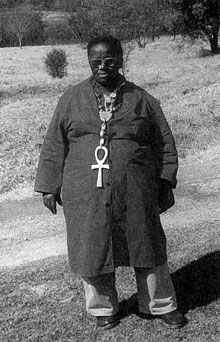
Vusamazulu Credo Mutwa was a Zulu sangoma from South Africa. He was known as an author of books that draw upon African mythology, traditional Zulu folklore, extraterrestrial encounters and his own personal encounters. His last work was a graphic novel called the Tree of Life Trilogy based on his writings of his most famous book, Indaba my Children. In 2018 he was honoured with an USIBA award presented by the South African Department of Arts and Culture, for his work in indigenous wisdom.
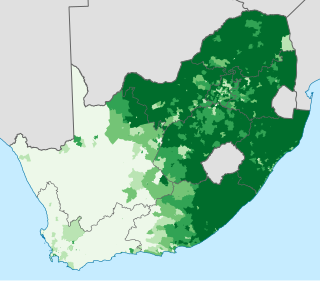
South African Bantu-speaking peoples represent the majority indigenous ethno-racial group of South Africans. Occasionally grouped as Bantu, the term itself is derived from the English word "people", common to many of the Bantu languages. The Oxford Dictionary of South African English describes "Bantu", when used in a contemporary usage or racial context as "obsolescent and offensive", because of its strong association with the "white minority rule" with their Apartheid system. However, Bantu is used without pejorative connotations in other parts of Africa and is still used in South Africa as the group term for the language family.
Spider Grandmother is an important figure in the mythology, oral traditions and folklore of many Native American cultures, especially in the Southwestern United States.
African-American folktales are the storytelling and oral history of enslaved African Americans during the 1700s–1900s. Prevalent themes in African-American folktales include tricksters, life lessons, heartwarming tales, and slavery. African Americans created folktales that spoke about the hardships of slavery and told stories of folk spirits that could outwit their slaveholders and defeat their enemies. These folk stories gave hope to enslaved people that folk spirits would liberate them from slavery.

The Nguni people are a linguistic cultural group of Bantu cattle herders who migrated from central Africa into Southern Africa, made up of ethnic groups formed from hunter-gatherer pygmy and proto-agrarians, with offshoots in neighboring colonially-created countries in Southern Africa. Swazi people live in both South Africa and Eswatini, while Ndebele people live in both South Africa and Zimbabwe.

Incest is found in folklore and mythology in many countries and cultures in the world.
Blood Clot Boy is a figure in the mythologies of several Native American tribes, including the Blackfoot, Arapaho, Santee, and Lakota. He is typically depicted as being born after a clot of blood from a buffalo was placed in a pot of boiling water, although the manner in which Blood Clot Boy is given life can vary between versions of the story.

Br'er Rabbit is a central figure in an oral tradition passed down by African-Americans of the Southern United States and African descendants in the Caribbean, notably Afro-Bahamians and Turks and Caicos Islanders. He is a trickster who succeeds by his wits rather than by brawn, provoking authority figures and bending social mores as he sees fit. Popular adaptations of the character, originally recorded by Joel Chandler Harris in the 19th century, include Walt Disney Productions' Song of the South in 1946.

Nalakuvara, also known as Nalakubara, appears in Hindu and Buddhist mythology as the brother of Manigriva, the son of the yaksha king Kubera, and husband of Rambha and Ratnamala. Nalakuvara often appears as a sexual trickster figure in Hindu and Buddhist literature.

The Xhosa people, or Xhosa-speaking people are a Bantu ethnic group native to South Africa. They are the second largest ethnic group in South Africa and are native speakers of the isiXhosa language.

In mythology and the study of folklore and religion, a trickster is a character in a story who exhibits a great degree of intellect or secret knowledge and uses it to play tricks or otherwise disobey normal rules and defy conventional behavior.

West African mythology is the body of myths of the people of West Africa. It consists of tales of various deities, beings, legendary creatures, heroes and folktales from various ethnic groups. Some of these myths traveled across the Atlantic during the period of the Trans-Atlantic slave trade to become part of Caribbean, African-American and Brazilian mythology.
Coyote is an irresponsible and trouble-making character who is nevertheless one of the most important and revered characters in Navajo mythology. Even though Tó Neinilii is the Navajo god of rain, Coyote also has powers over rain. Coyote’s ceremonial name is Áłtsé hashké which means "first scolder". In Navajo tradition, Coyote appears in creation myths, teaching stories, and healing ceremonies.
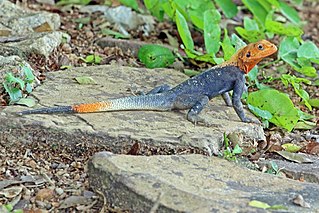
Agadzagadza is a trickster figure from the mythology of the Bura people, one of the population groups of Nigeria. He is a male agama lizard and appears as part of an aetiological explanation for the origins of death in their culture.
References
- 1 2 3 4 5 6 Lynch, Patricia Ann; Roberts, Jeremy (2010). African Mythology, A to Z. Infobase Publishing. p. 52. ISBN 978-1-4381-3133-7.
- 1 2 Sherman, Josepha (2015-03-26). Storytelling: An Encyclopedia of Mythology and Folklore. Routledge. p. 523. ISBN 978-1-317-45937-8.
- 1 2 3 4 Seal, Graham (2001). Encyclopedia of Folk Heroes. ABC-CLIO. p. 108. ISBN 978-1-57607-216-5.
- 1 2 3 4 Trickster Tales: Forty Folk Stories from Around the World. august house. 1996. pp. 28–29. ISBN 978-0-87483-450-5.